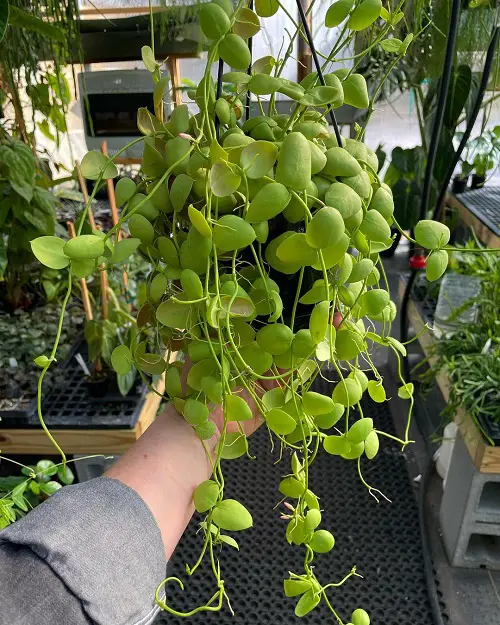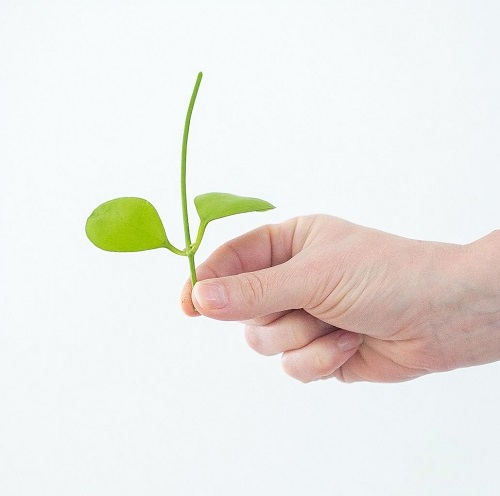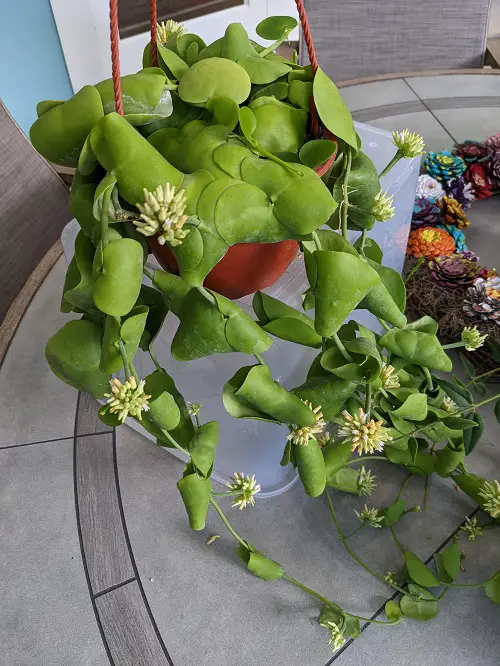Dischidia Platyphylla is a small little plant that stands out with its round leaves. It is easy to maintain and also stays compact!

In this article, we will explore the best ways to grow and care for Dischidia Platyphylla, including propagation techniques, ideal growing conditions, and maintenance tips.
Find How to Grow Dischidia Nummularia Easily
Dischidia Platyphylla Plant Information
Dischidia Platyphylla is a unique and attractive plant that belongs to the family of Apocynaceae. This climbing vine is native to the Philippines and has an epiphytic growth habit. The branches’ twine and their round leaves overlap slightly.
The leaves have adventitious roots underneath, but it is their imbricated arrangement that enables them to grip the bark and grow flat against trees, a process is known as shingling. This plant has a unique symbiotic relationship with arboreal ants.
The helmeted leaves provide a home for the ants, and their detritus provides nutrients for the plant’s roots. Additionally, the ants act as a deterrent to predatory insects. To replicate its natural growth habit, it is recommended to mount the plant on bark for optimal growth.
Propagating Dischidia Platyphylla

Propagating Dischidia Platyphylla is simple, and you can easily grow a full plant with its luscious leaves from cuttings.
- Begin by snipping off a stem that is at least four inches in length. Be sure to cut just below a node (a point on the stem where the leaves emerge) so that the cutting can root.
- Remove any leaves that are on the lower half of the stem.
- Dip the bottom of the cutting in rooting hormone, if desired.
- Place the cutting in a pot filled with a well-draining potting mix.
- Water the soil lightly and keep it moist but not soggy.
- Place the pot in a warm, bright location without direct sunlight.
- Wait for the cutting to form a strong root system, which should take about three to four weeks.
It is also possible to propagate Dischidia Platyphylla via air layering. To do this, you’ll need to cut a portion of the stem and wrap it in moist sphagnum moss. Keep the moss moist and wait for roots to form. Once the roots have formed, you can remove the stem section and pot it up.
Requirements for Growing Dischidia Platyphylla

Light
Dischidia Platyphylla grows naturally in filtered sunlight in its native habitat. Similarly, in a home setting, place the plant near an east-facing window where it can receive 2-3 hours of direct morning sunlight.
Avoid keeping the plant in direct exposure to the afternoon sun.
Soil
To provide an optimal growing environment for Dischidia Platyphylla, use a well-draining mix consisting of coco coir, perlite or vermiculite, orchid bark, sphagnum moss, and worm castings.
Adding a handful of horticultural charcoal to this epiphytic mix can also be beneficial. Alternatively, a simpler mix of coco coir chips and sphagnum moss can be used to achieve similar results.
Water
Water the plant when the soil feels dry to the touch, but do not allow the soil to become soggy. When watering, use water at room temperature and water thoroughly until the water is seen coming out of the drainage holes.
Tepmperature and Humidity
Dischidia Platyphylla prefers temperatures between 65-75°F (18-24°C).
It prefers high humidity levels between 60-80%. If the humidity levels drop below 40%, you should provide extra misting to keep the leaves hydrated.
Read about Dischidia hirsuta ‘Red Leaf’ Care Tips
Dischidia Platyphylla Care

Fertilizer
Use a balanced liquid fertlizer, diluted to 1/2 of its strength, once in 6-8 weeks. You can also use fish emulsion or compost tea every alternate month to boost the growth.
Pests and Diseases
Dischidia Platyphylla is susceptible to a variety of pests and diseases, including aphids, mealybugs, scale, thrips, and spider mites.
It is also susceptible to root rot and fungal diseases, such as powdery mildew, if the plant is grown in overly wet conditions.
To prevent damage from pests and diseases, it is important to keep the plant in well-draining soil and to avoid overwatering. It is also important to inspect the plant regularly for signs of pests or diseases and to take steps to address any issues quickly.


